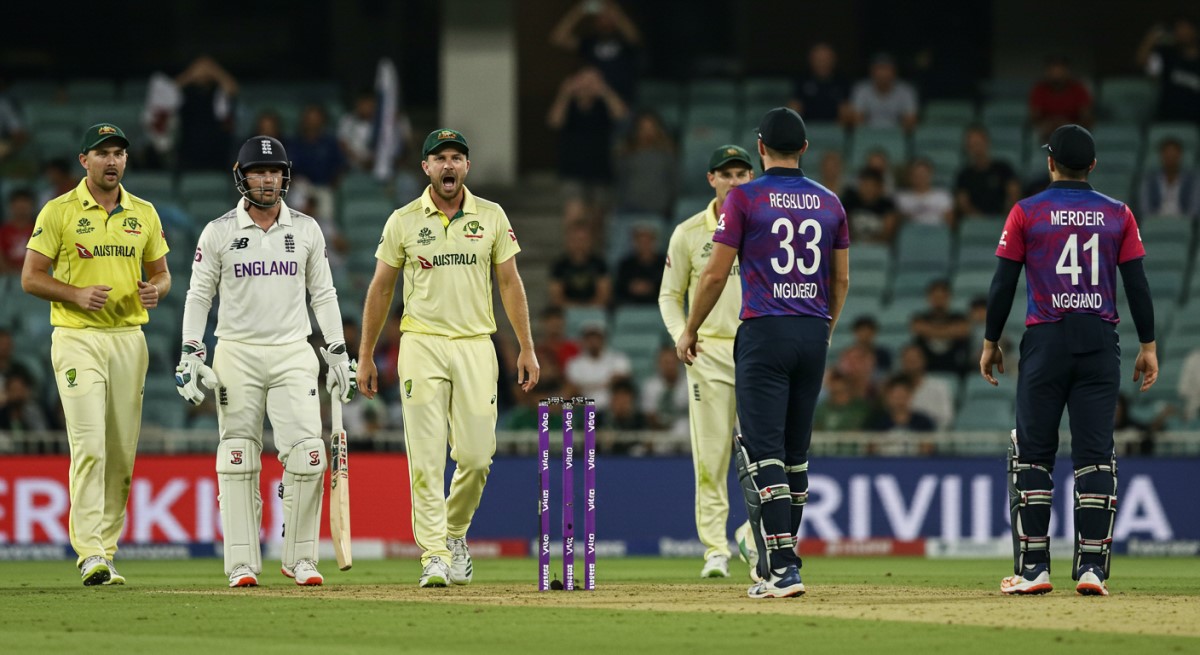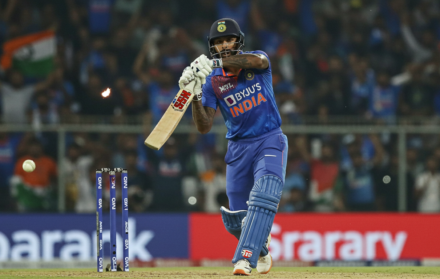
Analyzing the 2024 T20 World Cup: Key Takeaways
The 2024 T20 World Cup wasn’t just another entry in the cricketing calendar—it was a landmark event that reshaped expectations for the sport’s shortest format. From the outset, the tournament made it clear: T20 cricket is no longer confined to the traditional powerhouses. With 20 nations competing and 55 matches played across two continents, the 2024 T20 World Cup proved that cricket’s global footprint is expanding at pace—and with it, the level of competition has never been higher.
This wasn’t a tournament where the usual narratives held sway. Underdogs ripped up the script. From the USA’s stunning upset victories to Afghanistan’s tactical brilliance, smaller nations didn’t just show up—they showed what’s possible with belief, structure, and fearless cricket. Every game felt like a potential turning point, with no easy wins and no guarantees.
The 2024 T20 World Cup also pushed the boundaries tactically. Teams experimented with batting orders, innovative field placements, and death-over strategies that kept fans and analysts guessing. Powerplay aggression was matched with mid-innings control, while bowlers continued to evolve in how they adapted to flat pitches and heavy-hitting batters.
As the dust settles, what remains is a tournament rich in narratives, surprises, and moments that will be talked about for years. This detailed breakdown explores the most important developments—from standout individual performances to broader trends in gameplay and team dynamics. Whether you’re a stats enthusiast, a strategy buff, or just a fan reliving the excitement, this guide to the 2024 T20 World Cup has you covered.
T20 Cricket Goes Global

The 2024 T20 World Cup marked a turning point in cricket’s global journey. Co-hosted by the United States and the West Indies, it took the game to audiences that had only recently discovered the joy of sixes, yorkers, and Super Overs.
Matches were held in iconic West Indian venues like Kensington Oval and Queen’s Park Oval, but also in newer grounds like Grand Prairie Stadium in Texas and the Nassau County International Cricket Stadium in New York. The USA embraced its hosting duties with enthusiasm—and delivered one of the tournament’s biggest shocks by beating Pakistan.
Breakout Performances from Emerging Nations
The tournament spotlight wasn’t solely on the traditional giants. It shifted—often and dramatically—towards teams previously considered fringe. The most compelling performances came from Associate nations, who not only competed but won big.
Table: Notable Performances by Emerging Teams
| Team | Highlight Performance |
|---|---|
| USA | Defeated Pakistan in a Super Over thriller |
| Uganda | Secured their first World Cup win vs PNG |
| Nepal | Pushed South Africa to the final over |
| Scotland | Nearly upset Australia in the group stages |
| Oman | Took Sri Lanka into a tight contest |
These teams didn’t just show up—they showed out. With the ICC committed to expanding cricket’s reach, performances like these prove that the Associate gap is closing rapidly.
India’s Long-Awaited Triumph
India had entered every recent ICC tournament as favourites, only to falter at key moments. But 2024 was different. They went unbeaten through the tournament and lifted the trophy in a tense final against South Africa, sealing their second T20 World Cup title after a 17-year wait.
What Powered India’s Victory:
-
Rohit Sharma’s tactical nous: From field placements to batting order changes, his instincts were spot-on.
-
Virat Kohli’s experience: His 76 in the final was the anchor innings India desperately needed.
-
Suryakumar Yadav’s innovation: Consistently breaking bowling rhythms with audacious strokeplay.
-
Jasprit Bumrah’s brilliance: Particularly at the death, where he defended 12 runs in the final over.
India’s campaign was built on depth, calmness under pressure, and a mastery of conditions—especially on the slower Caribbean pitches.
South Africa’s First-Ever Final

South Africa’s journey to their first-ever World Cup final (in any format) was one of the most emotionally charged narratives of the tournament. Long known for their “choker” tag, the Proteas exorcised many ghosts by winning key knockout matches with composure.
While they narrowly lost to India in the final, their performance across the tournament was consistent and strategically sound. Heinrich Klaasen and Aiden Markram stood tall with the bat, while Anrich Nortje delivered blistering spells with the ball. Their campaign proved that South Africa now possesses the mental steel to go all the way—perhaps just not yet.
Tactical Innovations in T20 Strategy
The 2024 edition was a masterclass in adaptive cricket. Teams that embraced flexibility and data-led decisions performed better than those relying on old-school approaches.
Spin Rules Again
Several venues—especially in the Caribbean—offered grip and turn, putting spinners back in the driver’s seat. Teams that stacked their squads with finger spinners and wristies found it easier to strangle opposition batters. India, Afghanistan, and Bangladesh were notably effective.
Powerplay Pressure
T20 captains became bolder in using their best bowlers in the Powerplay. Spinners opened the innings more frequently, and field placements grew increasingly aggressive. It became common to see teams with scores of 25/3 rather than 60/1 after six overs.
Flexible Batting Orders
Batters were shuffled based on match situations rather than rigid roles. Teams like England promoted finishers like Livingstone in the 8th over to attack spin. Others floated anchors when early wickets fell. This dynamic planning reflected a broader shift in T20 strategy.
Players Who Defined the Tournament
Beyond the familiar faces, several players cemented themselves as match-winners under pressure.
| Player | Team | Key Stat | Highlight Moment |
|---|---|---|---|
| Nicholas Pooran | West Indies | 388 runs | 98 (53) vs India in semi-final |
| Saurabh Netravalkar | USA | 12 wickets | Super Over heroics vs Pakistan |
| Jasprit Bumrah | India | Player of the Tournament | Defended 12 in the World Cup Final |
| Rashid Khan | Afghanistan | 15 wickets, economy 5.7 | 3/19 vs England in Super 8s |
| Matheesha Pathirana | Sri Lanka | 14 wickets | 4/20 vs Netherlands |
The tournament will be remembered not just for who won it, but for how it redefined who can win moments within it.
Australia and England Falter

Two of the format’s most successful teams in recent years—Australia and England—left the tournament under a cloud of disappointment.
England’s Problems:
-
Ageing squad with few in-form batters.
-
Slow adaptation to conditions, especially spin-heavy surfaces.
-
Inflexible team selection, with few impact subs.
Australia’s Issues:
-
Fragile middle order and failure to accelerate in key phases.
-
No standout spinner to anchor the bowling attack.
-
Missed opportunities in close matches—especially against Afghanistan and India.
The need for generational change and fresh strategy is evident for both teams.
The Fans: Loud, Diverse and Everywhere
The USA crowds were vocal, engaged, and enthusiastic—sometimes to the surprise of broadcasters. New York’s Nassau County stadium sold out nearly every match. Meanwhile, Caribbean crowds brought back the rhythmic celebrations of earlier T20 World Cups, especially during West Indies matches.
One key takeaway? Cricket’s fandom is now too large and too diverse to be defined by a few major nations. The passion is everywhere—and growing.
Statistical Recap of the 2024 T20 World Cup
Let’s break down the tournament’s most eye-catching stats:
| Category | Record/Player |
|---|---|
| Most Runs | Nicholas Pooran (388 runs) |
| Most Wickets | Arshdeep Singh (17 wickets) |
| Best Strike Rate (min 100) | Suryakumar Yadav – 189.6 |
| Best Bowling Economy (min 15 overs) | Rashid Khan – 5.7 |
| Highest Team Total | West Indies – 212/4 vs South Africa |
| Lowest Defended Total | Sri Lanka – 131 vs Bangladesh |
| Most Sixes in a Match | 24 – West Indies vs South Africa |
These numbers show a clear trend: while big hits are still part of T20, the value of consistency, smart bowling, and adaptability is rising.
What This Means for the Future of T20 Cricket
The 2024 T20 World Cup gave us a glimpse into what the future of the format might look like:
-
Global Expansion: With USA and Uganda winning games, expect more investment and ICC support for Associate teams.
-
Spin Resurgence: T20 leagues may begin to favour mystery spinners and defensive tweakers over pure pace.
-
Captaincy Evolution: Modern T20 leaders must be tacticians, risk-takers, and data-savvy decision-makers.
-
Fan Growth: The success of hosting matches in new markets paves the way for future ICC events in North America, Europe, or even Africa.
T20 cricket has never stood still—and this tournament was proof that the format keeps reinventing itself every couple of years.
Final Thoughts: A Tournament Worth Remembering

The 2024 T20 World Cup wasn’t just a tournament—it was a moment in cricketing history that will be remembered for years to come. From its expanded format to its unpredictable results, it showcased everything that makes the shortest form of the game so compelling. It brought fresh energy, bold storylines, and a reminder that in T20 cricket, nothing is ever certain until the final ball.
For India, the triumph marked a powerful story of redemption. After years of near-misses and criticism, they emerged as deserving champions—blending experience with fearless youth to lift the trophy once more. For South Africa, it was a haunting case of ‘so near yet so far’. Their journey to the final stirred emotions across the cricketing world and marked a significant milestone in their tournament legacy.
But the biggest winner? The game itself. This World Cup proved that T20 cricket is no longer just a sideshow or a format for sloggers. It is a chess match at breakneck speed, rich with strategy, diversity, and drama. We saw tactical masterclasses, raw athleticism, and emerging stars from associate nations stepping into the limelight, giving fans hope for a truly global future.
As cricket looks ahead to 2026 and beyond, the blueprint has undoubtedly shifted. The bar has been raised. The audience is wider, the competition fiercer, and the possibilities more exciting than ever. If 2024 was the teaser, the future of T20 cricket promises to be a blockbuster.





